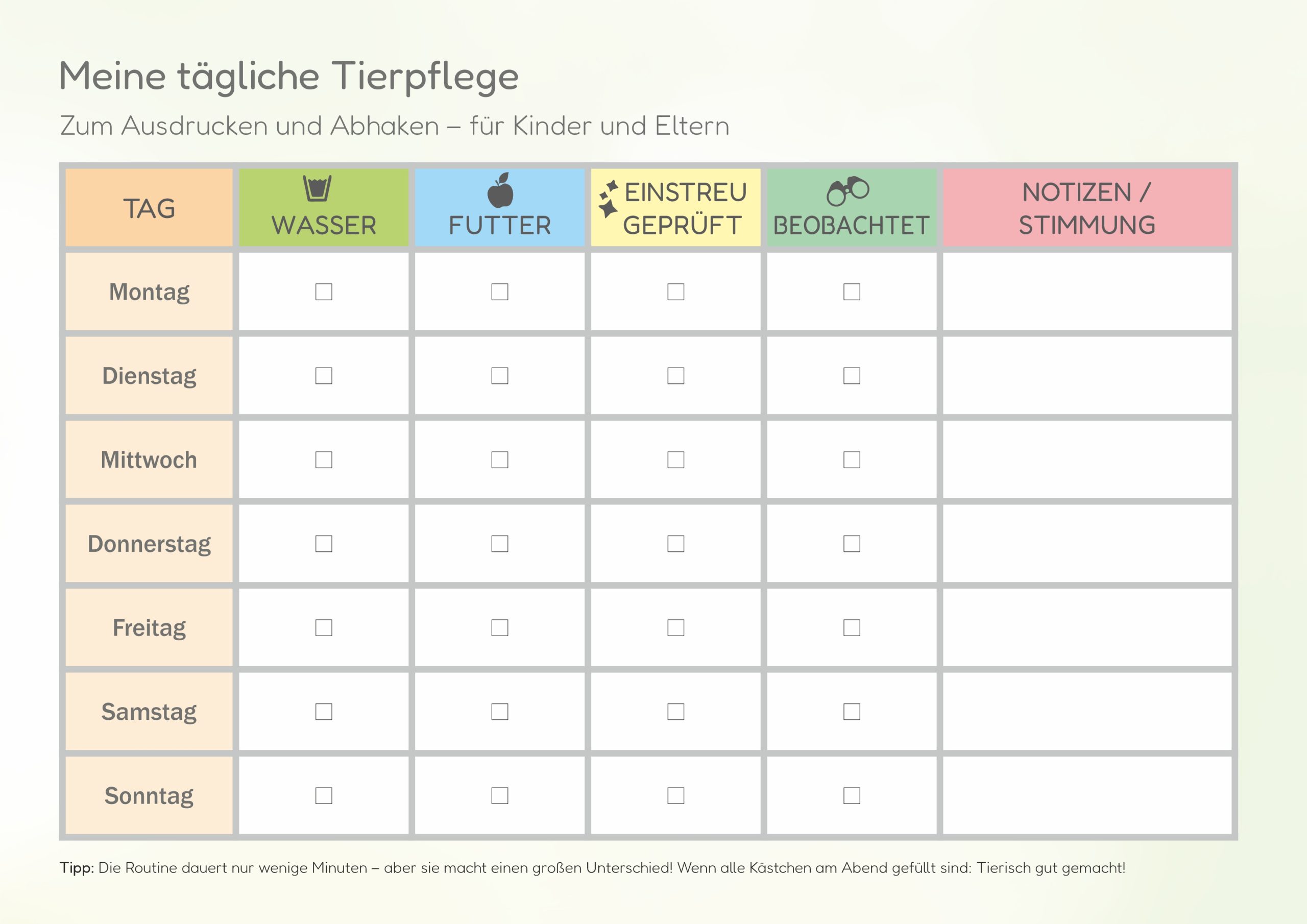
Family Weekly Schedule: who Does What?
Are you familiar with this? Every evening, the same question arises: “Who changed the water today?” or “Did anyone add hay?” In the end, it is often unclear whether the animals have really received everything they need. This is precisely where a weekly schedule helps. It brings clarity to family life, distributes tasks fairly, and ensures that no one – neither parents nor children – is overwhelmed.
Why a Schedule is so Important
Animals need daily care. However, in the hustle and bustle of everyday life, something can quickly be overlooked. A weekly schedule provides a remedy here: it makes tasks visible and shows who feeds, cleans, or observes. This way, everyone knows what to do – and children experience that reliability does not arise by chance, but can be planned.
Relieving Family Life
The schedule clarifies that animal care is teamwork. The main responsibility lies with the parents, while the children get involved step by step. A clear procedure avoids discussions and the typical “I thought you were doing that!”. At the same time, the children learn that their contribution counts and that it is easier to bear responsibility when you share it.
Age-appropriate Tasks
- Small children (from approx. 6 years): Fill up water, bring vegetables, help with refilling litter.
- School children (approx. 10 years): Feed independently, observe behavior, perform small cleaning tasks.
- Teenagers (from approx. 14 years): Take responsibility for entire days and carry out basic cleaning with the parents or alone.
How to get Started
Start with a simple schedule: Enter a main task and the responsible family member for each day from Monday to Sunday. It is best to hang the schedule in a clearly visible place on the refrigerator or next to the enclosure. This reminds everyone and becomes part of the routine.
👉 Tip: Let your children check boxes or stick stickers when they have completed their task. This motivates and makes responsibility visible!
Mini-checklist for Parents
- Create a plan together and involve children.
- Distribute tasks according to age.
- Promote routine. Hang up the schedule visibly.
- Incorporate small rewards (e.g. stickers or praise).
- Adjust regularly. Family life changes.
To the Point
A weekly schedule is not a rigid commandment, but a living tool. It shows children that responsibility can be planned and that care is easier in a team. This increases reliability in everyday life and the animal benefits twice: from clear procedures and loving care.
➡️ Extra service: Here you can download our CHIPSI weekly schedule as a PDF – simply print it out, fill it in, and get started.
🐹 CHIPSI Weekly Schedule for Families: who Does What?
Enter here who takes care of which animal when:
